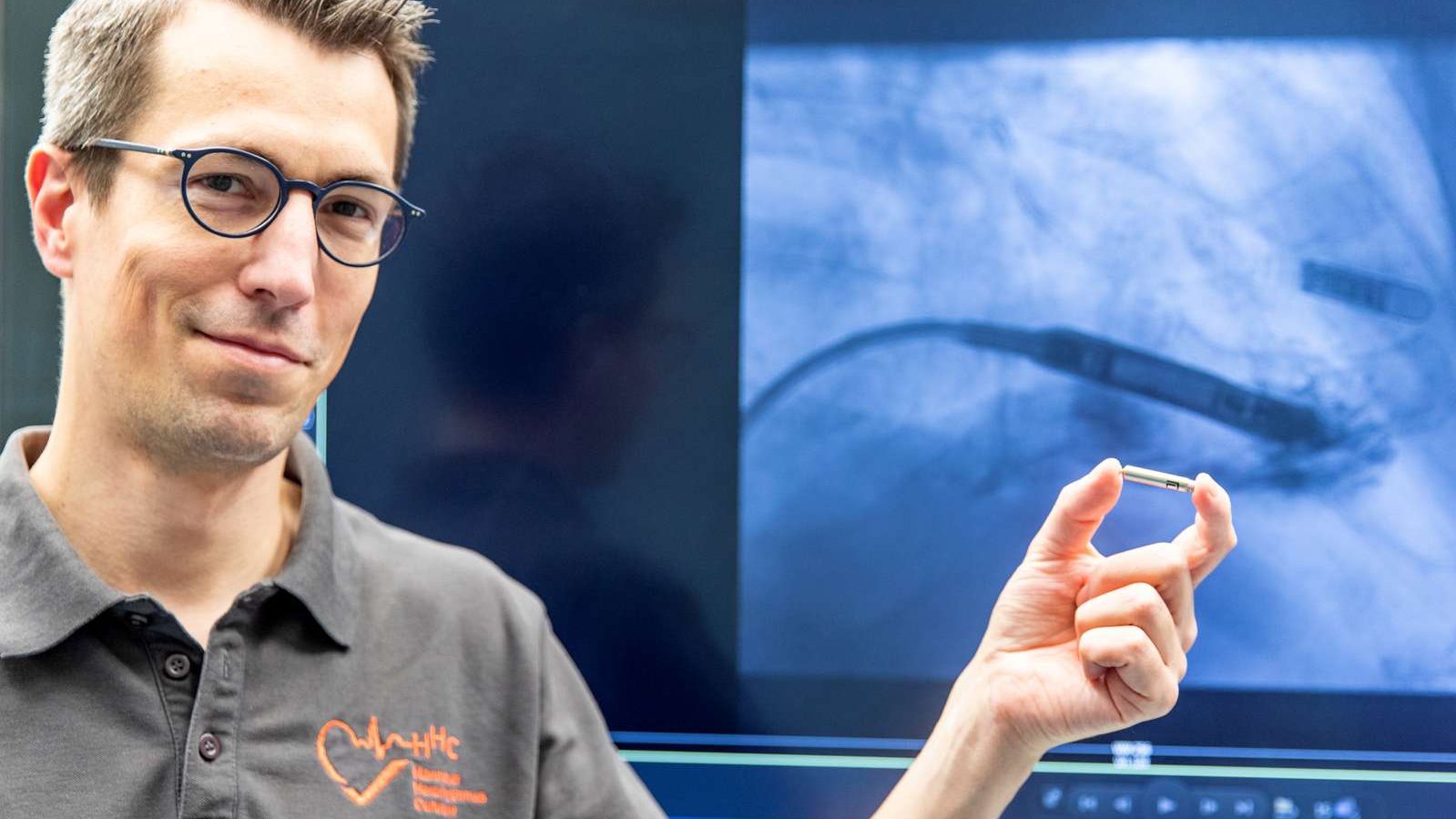Model is small, durable and contains all functions in one capsule.

Everything in a small capsule: Professor Duncker shows the new electrodeless pacemaker; Copyright: Karin Kaiser / MHH
When the heart beats too slowly, the use of a pacemaker may be necessary. The device works like a pacemaker, restoring the heartbeat to a normal rhythm. The Department of Cardiology and Angiology at Hannover Medical School (MHH) is one of the first hospitals in Germany to offer implantation of the new innovative AVEIR VR pacemaker. The model is associated with many advantages: It has no electrodes, it can be optimally positioned in the heart and it has a very long service life.
Good alternative for high-risk patients
In Germany, around 110,000 pacemakers are implanted every year. The pacemaker is usually placed below the collarbone or placed under the chest muscle. From there, wire-shaped electrodes lead through veins to the heart. When needed, the pacemaker sends electrical pulses to the electrodes. With each pulse, the heart muscle contracts and the heart beats in time again. Pacemakers of this type have proven themselves and are used successfully millions of times. "Nevertheless, complications can occur in isolated cases. For example, the electrodes can break, grow in or even cause infections," explains Professor Dr. David Duncker, head of the Hannover Heart Rhythm Center at of the Clinic for Cardiology and Angiology. The cardiologist is therefore pleased to be able to offer certain patients therapy with an alternative device. This is the electrodeless pacemaker AVEIR VR. It is particularly suitable for people with a high risk of surgery, susceptibility to infection, lack of access routes for normal pacemakers or severe heart valve leakage.
Optimal position in the heart muscle
In the new model, all functions are contained in a small capsule - it looks like an AAA battery, but is even smaller. "Because of its small size, the pacemaker can be implanted directly into the right main chamber of the heart," Professor Duncker explains. Since there is no need for electrodes, there is also no permanent strain on veins and heart valves. Another advantage is provided by what is known as mapping. Mapping allows the physician to measure the electrical signals in the heart before implantation and thus determine the optimal position for the pacemaker. "Then the device is screwed into the heart muscle. If it needs to be positioned differently or removed, it can be retrieved and repositioned," the cardiologist says. The model's lifespan is also a plus. According to the manufacturer, Abbott, it is 17 years. "That's impressively long," confirms Professor Duncker.
Pacemaker alleviates symptoms
The resting pulse of a healthy adult is about 60 to 80 beats per minute. If the heart beats too slowly or is interrupted due to a condition, this can lead to dizziness, fatigue, shortness of breath or even fainting. A pacemaker can relieve these symptoms. Implanting a pacemaker takes about 30 minutes in an uncomplicated procedure. Patients usually have to stay in the hospital for one night afterward and can then go home.
Text: Tina Götting